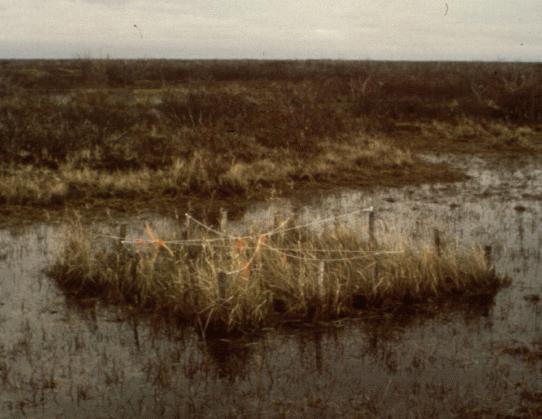
Vegetation removal is not limited to salt
marshes. Freshwater marshes and fens (calcium rich peat areas)
are also impacted. When goose densities are lower, these
freshwater sedges provide food for older goslings, especially
post fledging when they are more mobile and less vulnerable to
predation. At this time they can venture into taller vegetation
where visibility is poorer, because they have greater escape
ability. However, high populations and accumulated degradation of
preferred salt marsh feeding areas force families to disperse
into these habitats much sooner in a season than they normally
would. The freshwater sedge growth form is not adapted to
clipping and shoot pulling of this nature, unlike the salt marsh
grasses and sedges. Once these fresh water sedges (mainly Carex
aquatilis) is clipped, it does not respond by sending out
more side leaves or shoots.

This is a Carex aquatilis exclosure. This emergent sedge is widespread and dominant in freshwater marshes and fens. This habitat provides foraging and nesting areas for many shorebirds and ducks, including the secretive Yellow Rail. When the exclosure seen here was erected, the whole wetland basin was covered with it. After heavy shoot pulling by the geese, a situation similar to the salt water grubbed area is evident.
next slide | previous slide | slide show opening
revised - 12/18/02